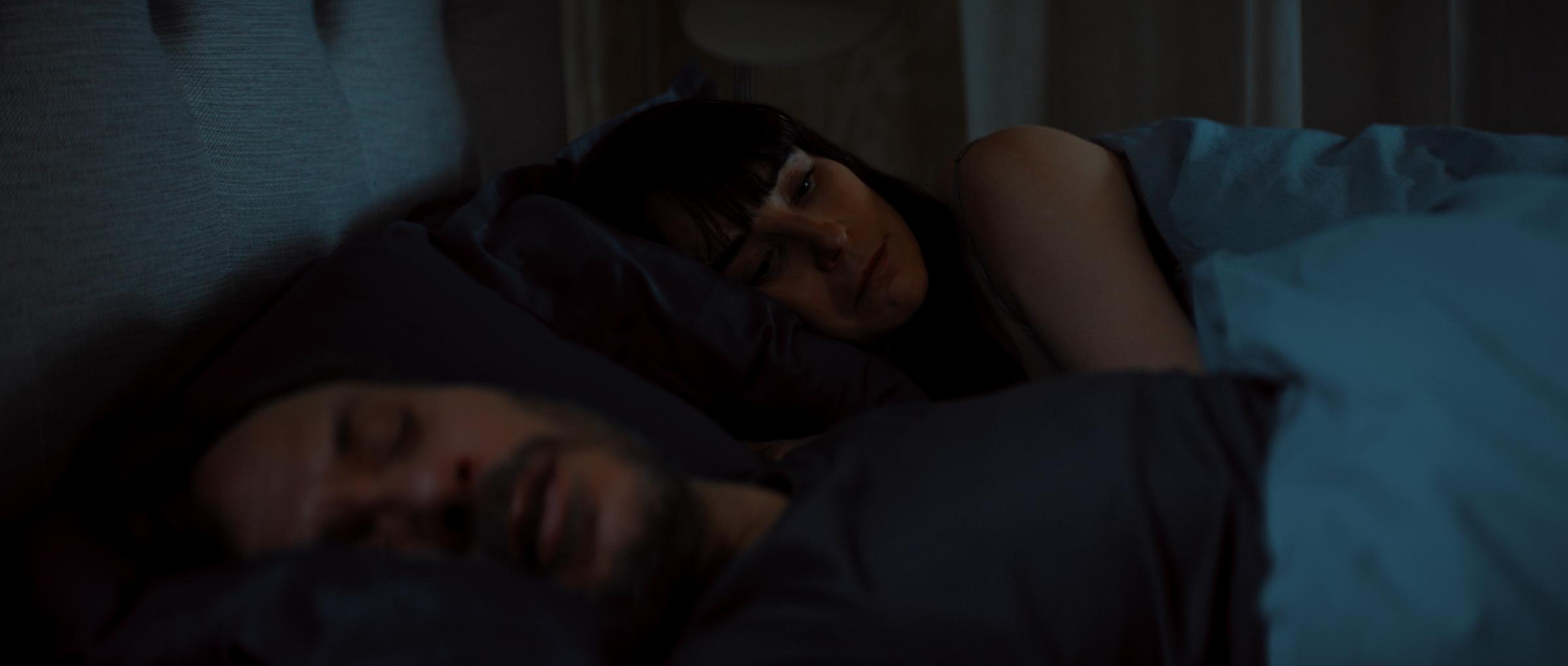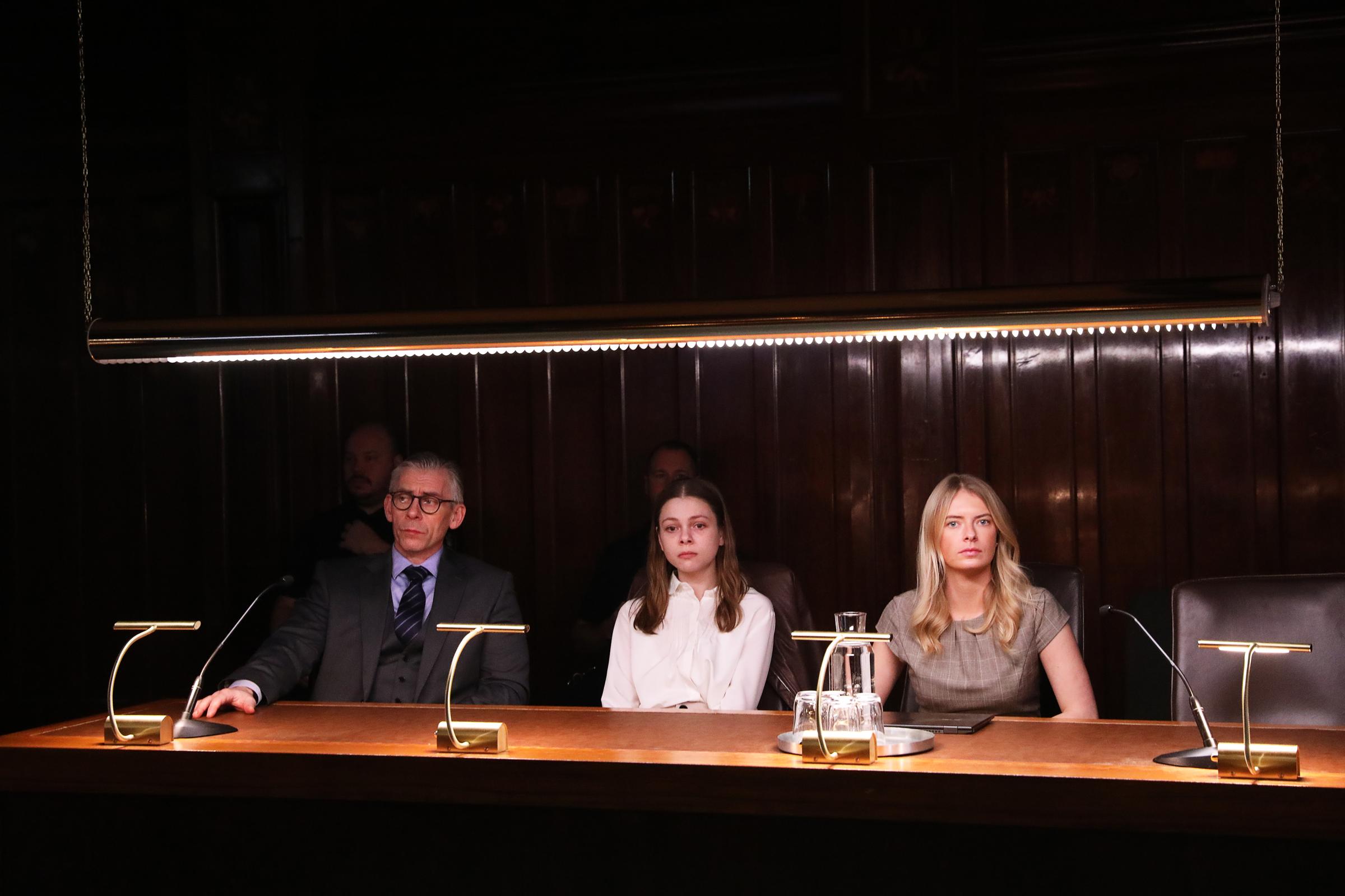Warning: This post contains spoilers for Netflix's A Nearly Normal Family.
From The Girl With the Dragon Tattoo to The Snowman to The Killing, English-language adaptations of popular Nordic noir properties have become known for making cultural waves.
But there are many more compelling entries in the dark and moody Scandinavian subgenre of crime fiction that have been developed for the screen in their original language. And as of Nov. 24, a new one has arrived on Netflix: A Nearly Normal Family.
Based on Swedish author M.T. Edvardsson's best-selling 2019 novel of the same name, the gripping six-part miniseries chronicles the fallout from the brutal stabbing of 32-year-old Christoffer Olsen (Christian Fandango Sundgren) in the Swedish city of Lund. The day after the murder, 19-year-old Stella Sandell (Alexandra Karlsson Tyrefors) is arrested for the crime, pushing her parents—pastor Adam (Björn Bengtsson) and attorney Ulrika (Lo Kauppi)—to go to desperate lengths to protect their daughter from the accusations levied against her.
While the book is divided into three distinct sections told from the points of view of Adam, Stella, and Ulrika, respectively—all unreliable narrators in their own way—the show jumps back and forth between the family members' perspectives. The first episode opens with 15-year-old Stella being sexually assaulted by an older counselor while away at handball camp (changed from church camp in the book). Although Stella tells her parents about the incident, they decide not to report it to the police, believing that the case against the counselor will ultimately fail and only cause more harm to Stella. This fateful choice echoes throughout the rest of the story, deeply affecting Stella's relationship with her parents, men, and herself.

The show then jumps four years into the future to Stella's 19th birthday, the night she meets Chris and begins a relationship with him. Six weeks later, Chris is dead and Stella is in custody, leaving her parents reeling as they try to defend their daughter while simultaneously coming to terms with their own failings as both parents and spouses.
Directed by Per Hanefjord (Hamilton, The Hidden Child) from a script by Anna Platt (The Congregation, The Truth Will Out) and Hans Jörnlind (Top Dog, The Truth Will Out), A Nearly Normal Family is a suspenseful examination of a seemingly ordinary family in crisis.
"From the first encounter with this story, I have appreciated that it really has something at heart," Hanefjord told Netflix. "It raises complex issues, offers depth of character and all the while with engaging suspense. I am in awe of the actors and I have that feeling of being part of something big, when new film stars are born."
How does Netflix's A Nearly Normal Family end?
Part murder mystery, part legal thriller, A Nearly Normal Family concludes with Stella's trial.
The secrets that Ulrika and Adam have kept from each other—including Ulrika disposing of Stella's cell phone and bloody clothes, and Adam lying to the police about what time Stella got home on the night of the murder in order to give her an alibi—play a role in the proceedings. But it's a conversation that Ulrika had earlier in the show with Stella's best friend Amina (Melisa Ferhatovic)—the content of which viewers weren't privy to—that proves to be the biggest game changer.

When Amina takes the stand to testify as a character witness for Stella, she shocks prosecutors by stating that she was drugged and raped by Chris on the night of his murder. She claims that she then fled his apartment and only found out he was dead the next morning. Amina says that because Chris' ex-girlfriend Linda (Emilia Roosmann) had previously tried to report him for the same thing and because of what happened with Stella's assault, she didn't think anyone would believe her about what happened.
As a lawyer well-versed in the legal system, Ulrika had advised Amina to sit on the information so that prosecutors couldn't try to convict both her and Stella for the murder. Instead, by waiting until the trial to share her side of the story, Amina could introduce an alternate suspect in the case so that Stella couldn't be found guilty beyond a reasonable doubt. Amina's reveal plays out just as Ulrika planned and Stella goes free.
However, throughout the finale, flashbacks to the night of the murder slowly reveal what really led to Chris' death. After realizing that Chris had drugged and kidnapped Amina, Stella rushed to his home to save her friend. Once there, she broke into the apartment, saw what Chris was doing, and helped Amina escape. The series ends months after the trial with Stella flashing back one final time to that night, showing that she did in fact stab Chris to death after he began chasing her and Amina with a knife, fell, and dropped the weapon. Amina helped Stella hide the knife and they both kept the full truth to themselves.
More Must-Reads from TIME
- Donald Trump Is TIME's 2024 Person of the Year
- Why We Chose Trump as Person of the Year
- Is Intermittent Fasting Good or Bad for You?
- The 100 Must-Read Books of 2024
- The 20 Best Christmas TV Episodes
- Column: If Optimism Feels Ridiculous Now, Try Hope
- The Future of Climate Action Is Trade Policy
- Merle Bombardieri Is Helping People Make the Baby Decision
Write to Megan McCluskey at megan.mccluskey@time.com